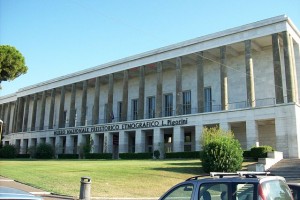Luigi Pigorini National Museum of Prehistory and Ethnography, Italy

The Kircherianum came to an end when, after the political unification of Italy, the well-known scientist Luigi Pigorini created the Museo Preistorico Etnografico in 1875. Specialized in the study of prehistoric societies, he recognized the need for an insitution devoted to the exhibit of Italian prehistoric finds and ethnographical objects coming from non-western cultures, in order to compare and evaluate cultural development in its different stages. Today the museum's educational service adopts a multidisciplinary method of cultural comparison: both prehistory and ethnography shall present museum exhibits as material evidences of a specific cultural origin. The museum thus opens up a widened cultural perspective to the public and serves to promote cross-cultural understanding, historical knowledge and the respect for cultural diversities. Located in the EUR-zone of Rome, which was designed as the venue for the World Exhibition in 1942 (which never took place however because of WW II), the museum is one of the most important of its kind in Italy, for both the number and quality of objects in its collections, as well as the research departments it houses. Copyright of VCM Image courtesy of WikipediaThe Luigi Pigorini National Museum of Prehistory and Ethnography (Museo Nazionale Preistorico Etnografico "Luigi Pigorini") is the earliest and richest institution devoted to prehistory and ethnographic studies in Italy. The museum takes its roots from the Museum Kircherianum, founded in 1650 by the Jesuit father Athanasius Kircher: one of the rare examples of a Wunderkammer (cabinet/room of curiosities) to have been established in Italy.
Similar content
06 Sep 2018 - 07 Sep 2018
posted on
24 Oct 2018
posted on
03 Feb 2012
posted on
02 Feb 2012

